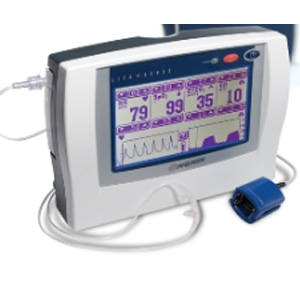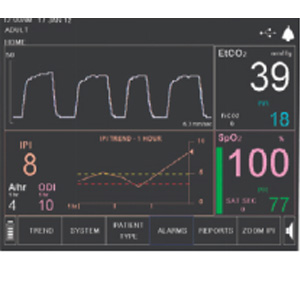Capnography
Capnography is the monitoring of the concentration or partial pressure of carbon dioxide
(CO2) in the respiratory gases. Its main development has been as a monitoring tool for use during anesthesia and intensive care. It is usually presented as a graph of expiratory CO2 (measured in millimeters of mercury, "mmHg") plotted against time, or, less commonly, but more usefully, expired volume. The plot may also show the inspired CO
2, which is of interest when rebreathing systems are being used.
The capnogram is a direct monitor of the inhaled and exhaled concentration or partial pressure of CO2, and an indirect monitor of the CO2 partial pressure in the arterial blood. In healthy individuals, the difference between arterial blood and expired gas CO2 partial pressures is very small. In the presence of most forms of lung disease, and some forms of congenital heart disease (the cyanotic lesions) the difference between arterial blood and expired gas increases and can exceed 1 kPa.



